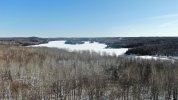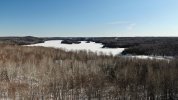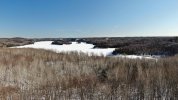I've been taking a series of photos of the same scene over the past weeks (M2Z) and sunlight photos have always appeared washed out with this blueish haze in the center. Post processing really didn't help. I'm pretty much a newb to photography, anything beyond fully automatic using a snapshot camera.

So I thought to try my variable ND Filters. I figured that as these use two polarized lenses to simulate ND values I would get the benefit of the polarization. My results:
ND=5

ND=2

Which is better? ND 5 seems dark. Either way, the blue haze is gone. I've ordered a straight CPL filter to try out.

So I thought to try my variable ND Filters. I figured that as these use two polarized lenses to simulate ND values I would get the benefit of the polarization. My results:
ND=5

ND=2

Which is better? ND 5 seems dark. Either way, the blue haze is gone. I've ordered a straight CPL filter to try out.










